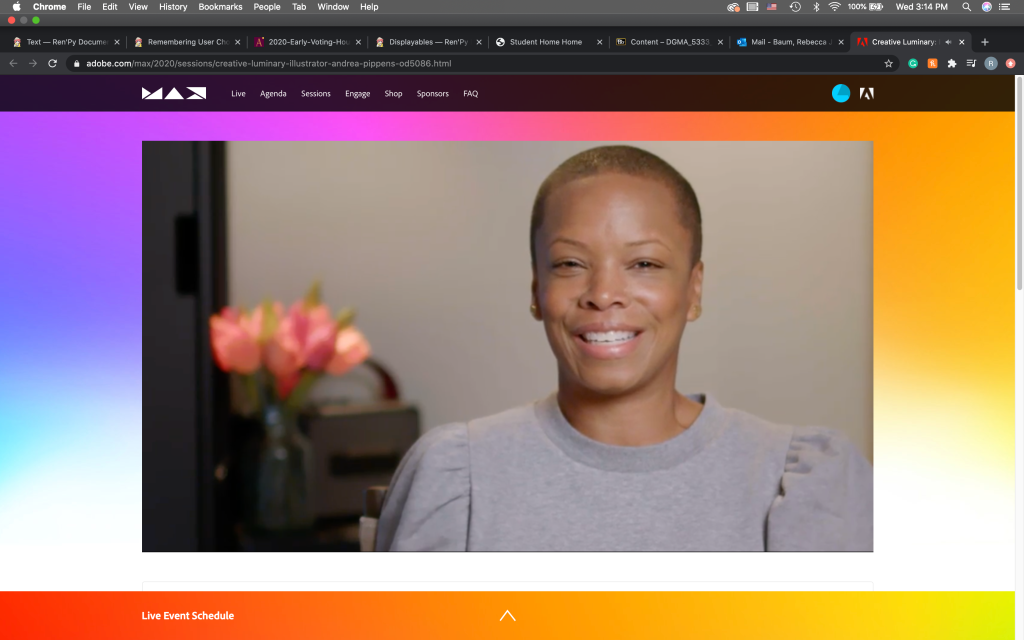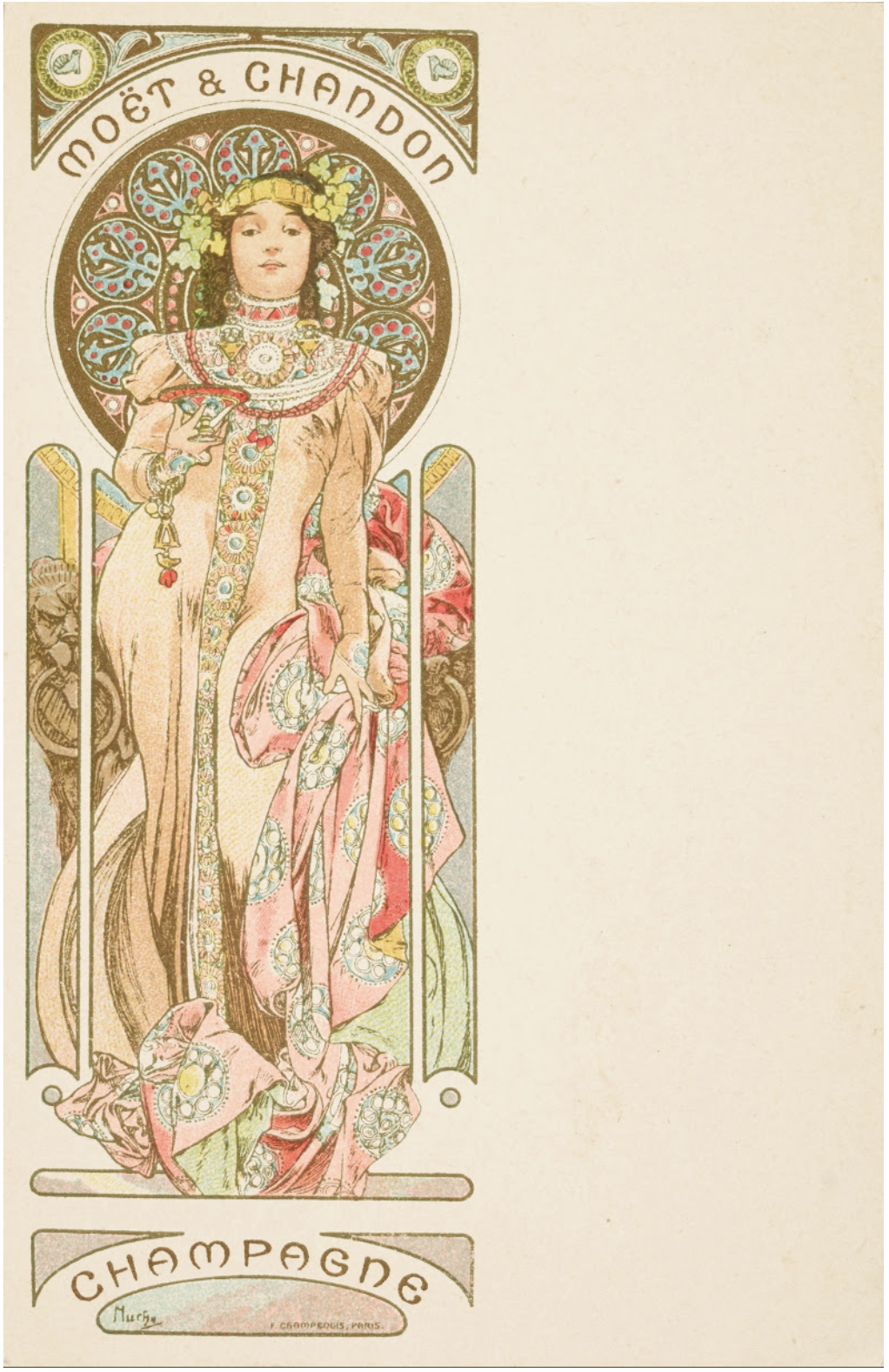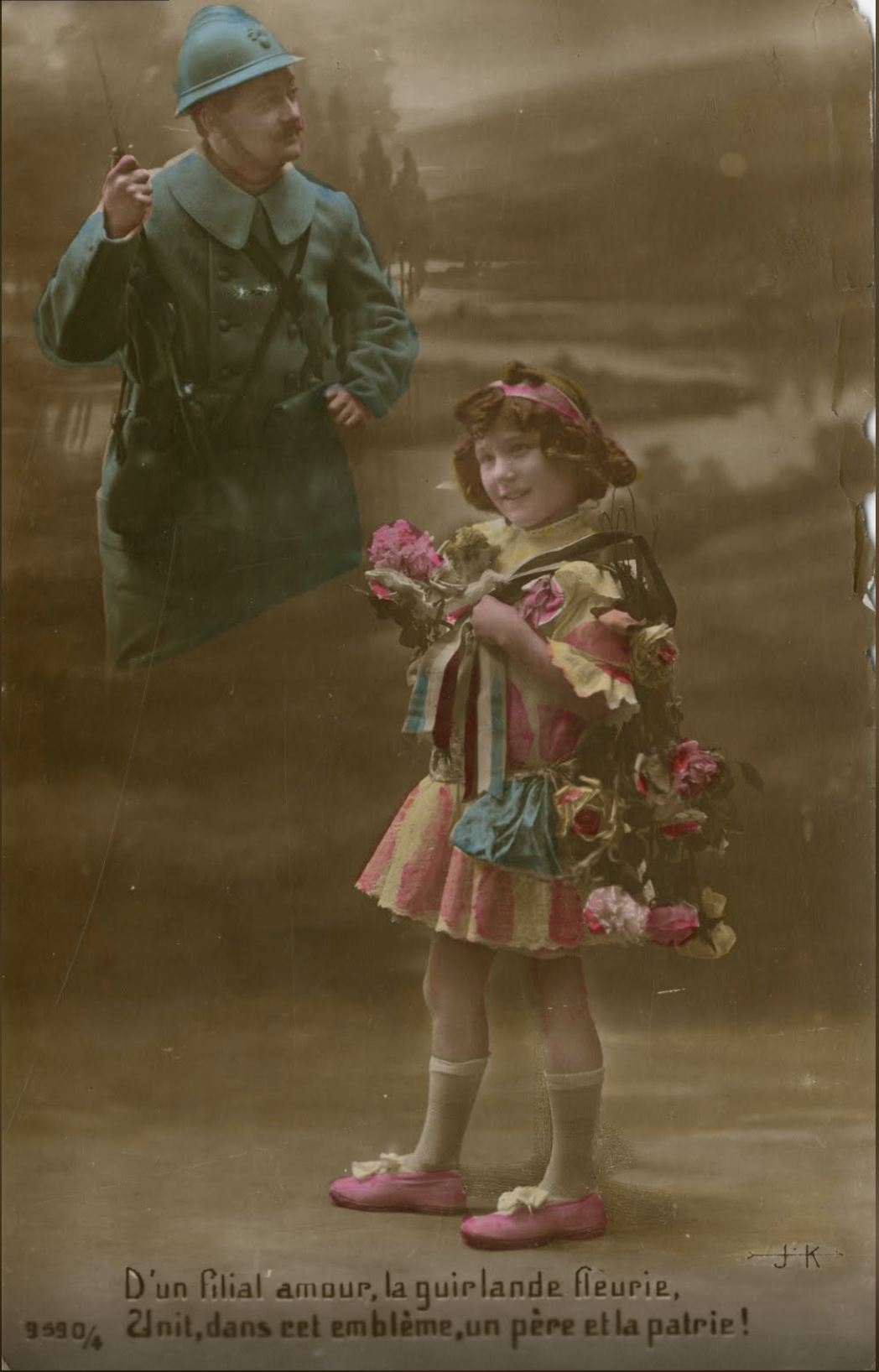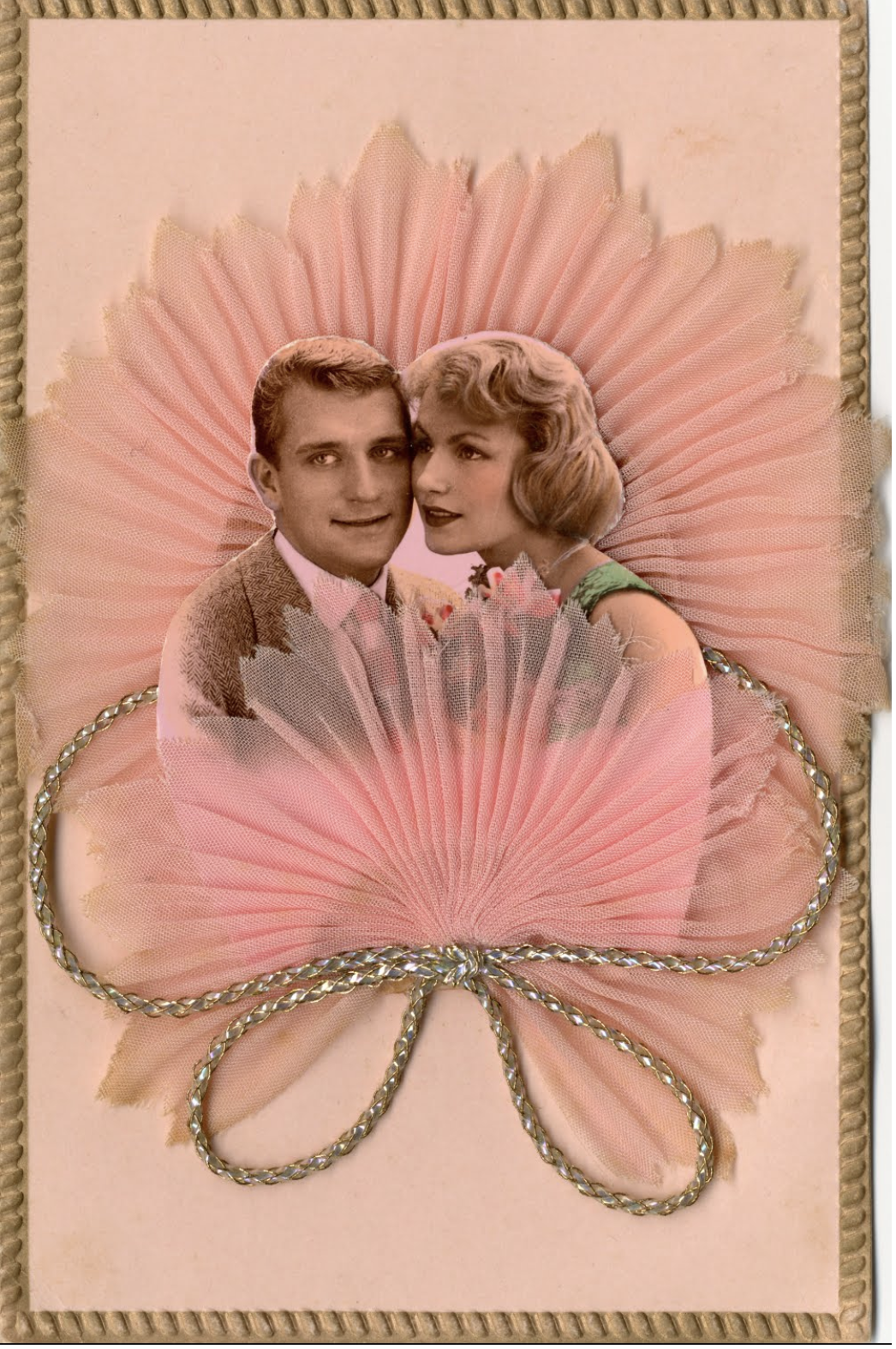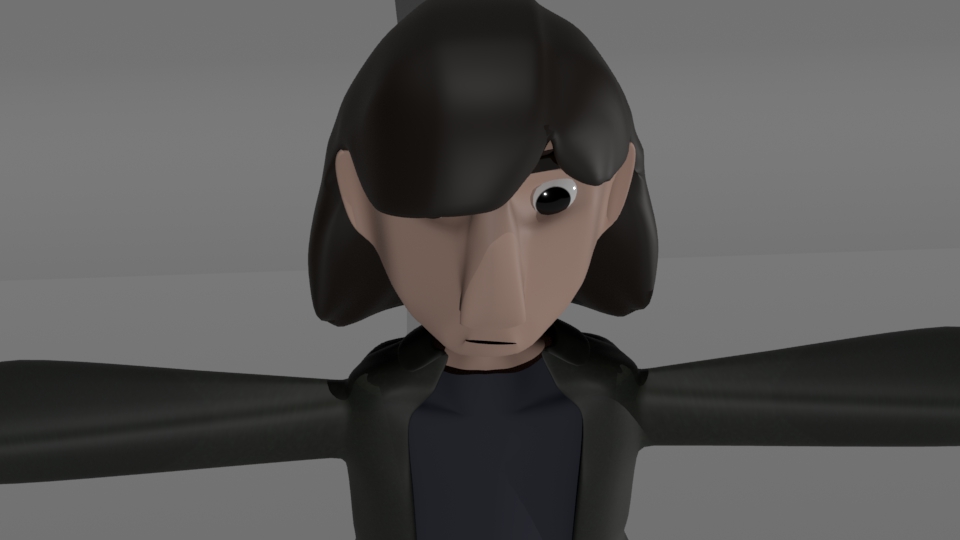During my winter break, I had the opportunity to visit the Metropolitan Museum of Art. Though it had not been my first time going there, I still got to look at art I had yet to see before. I generally prefer to spend most of my time in the Ancient Greek/Roman area wandering, what I would refer to as, “The Garden of Statues”. However, during this particular visit, I was able to find my way to where the great European pieces of the 19th century were kept. Artists who I either knew or heard of like Seurat and Monet were here, along with some artists who I would later learn to love like Klimt. I remember walking into that room and feeling greatness in the air. I believe this moment was heightened when I saw my first Van Gogh’s in person.
Van Gogh had always been a person whose art I heard of and been exposed to. It is difficult to go through this world, especially as an artist, and not be able to identify Starry Night or Cypresses. But never before in my life had I seen any of the real things. I never thought it was overly important to do so, yet once I got to see them I didn’t regret it. The pieces I saw, in particular, were Wheat Field with Cypresses (1889), Women Picking Olives (1889), Shoes (1888), Roses (1890), Self-Portrait with a Straw Hat (1887), L’Arlésienne: Madame Joseph-Michael Ginoux (1888-89), Sunflowers (1887), and Irises (1890).
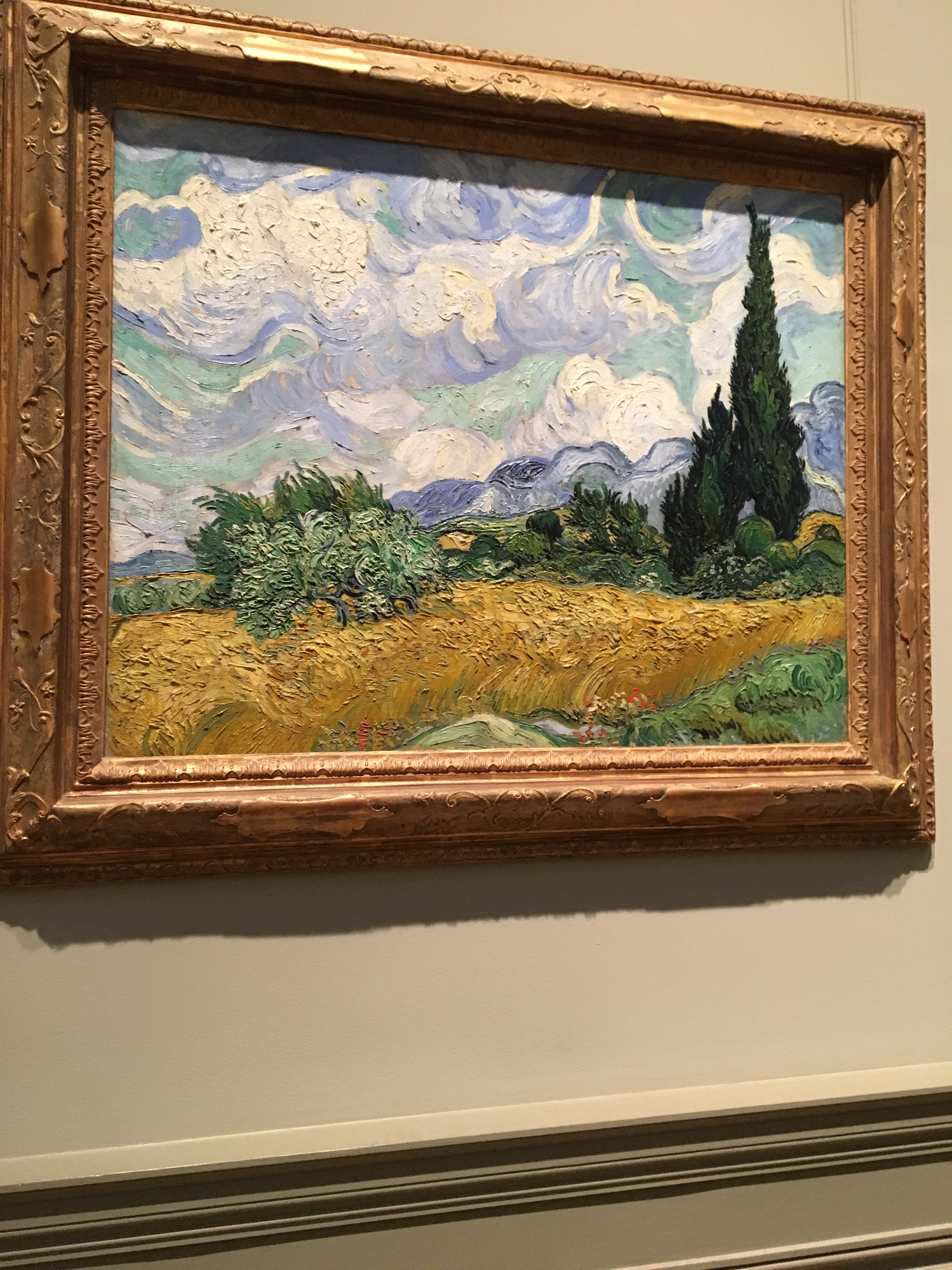
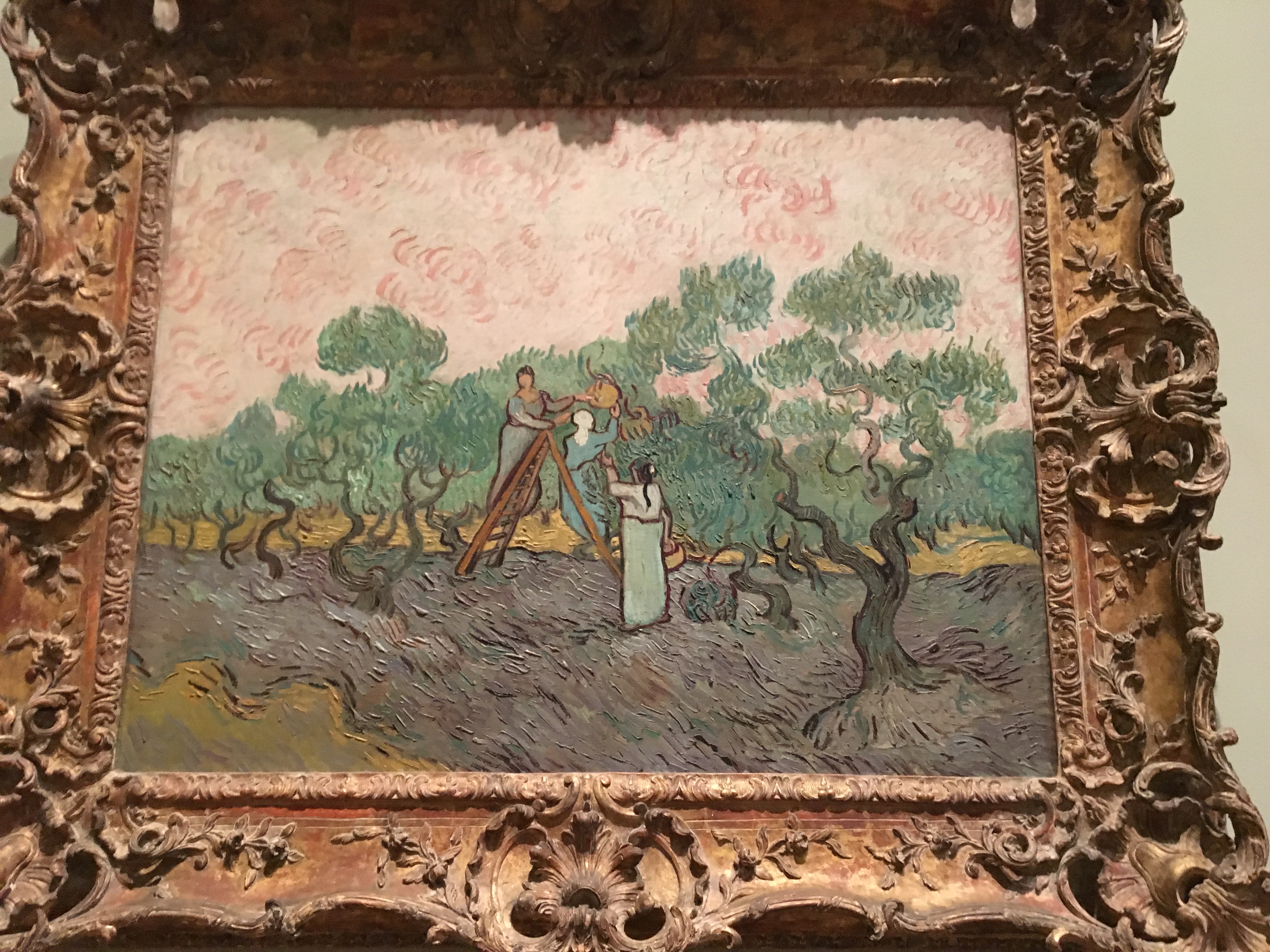



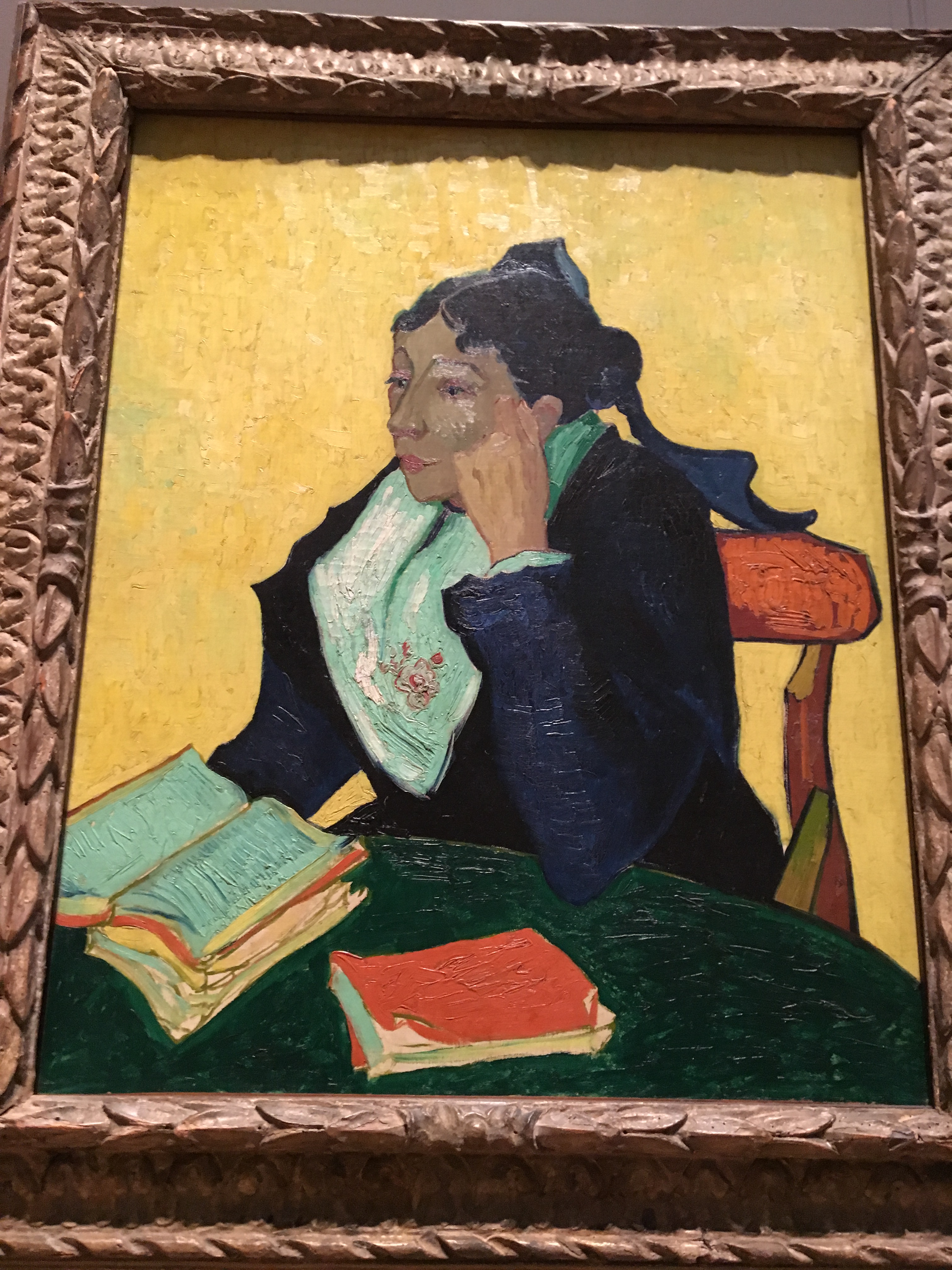
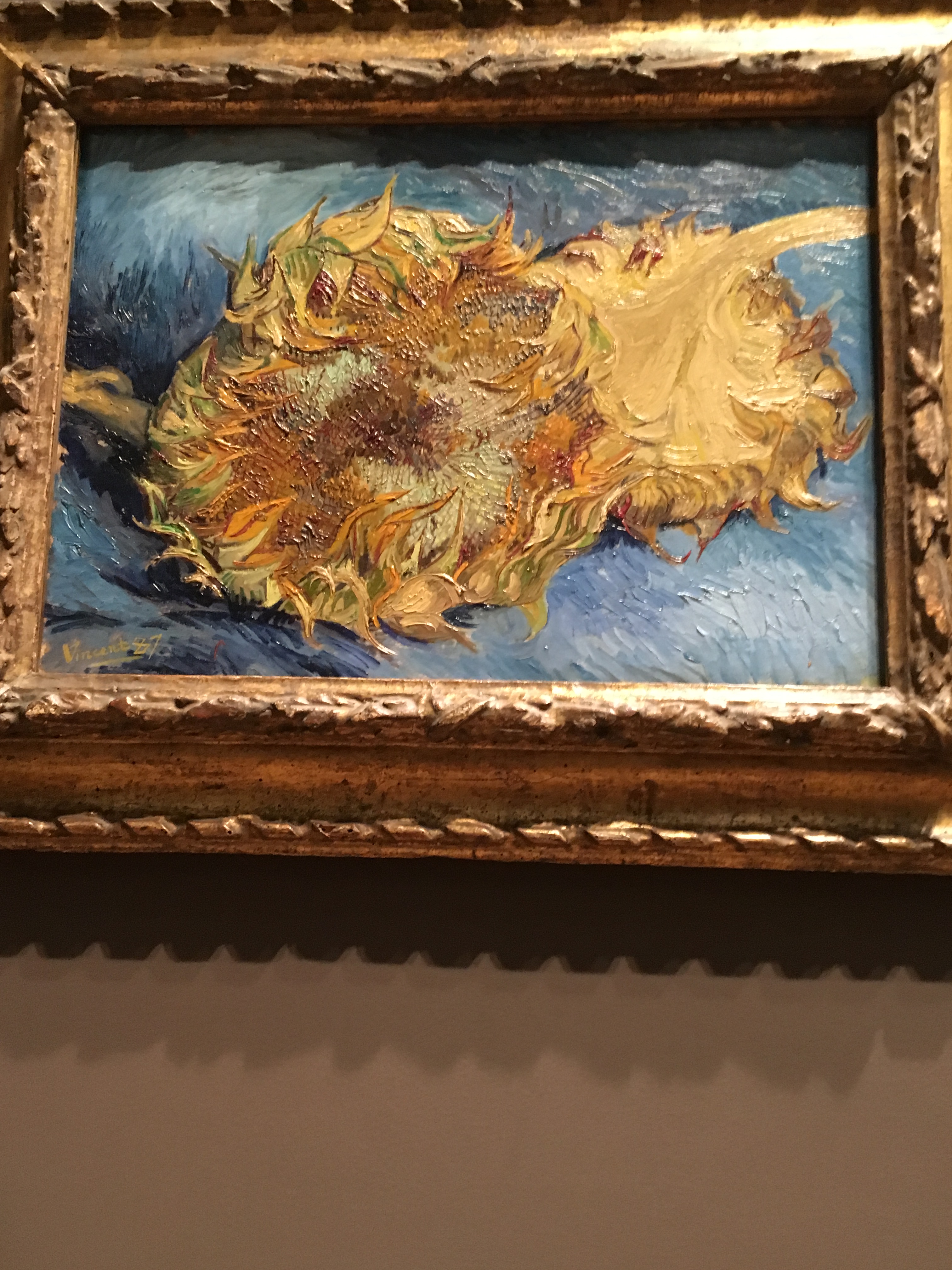
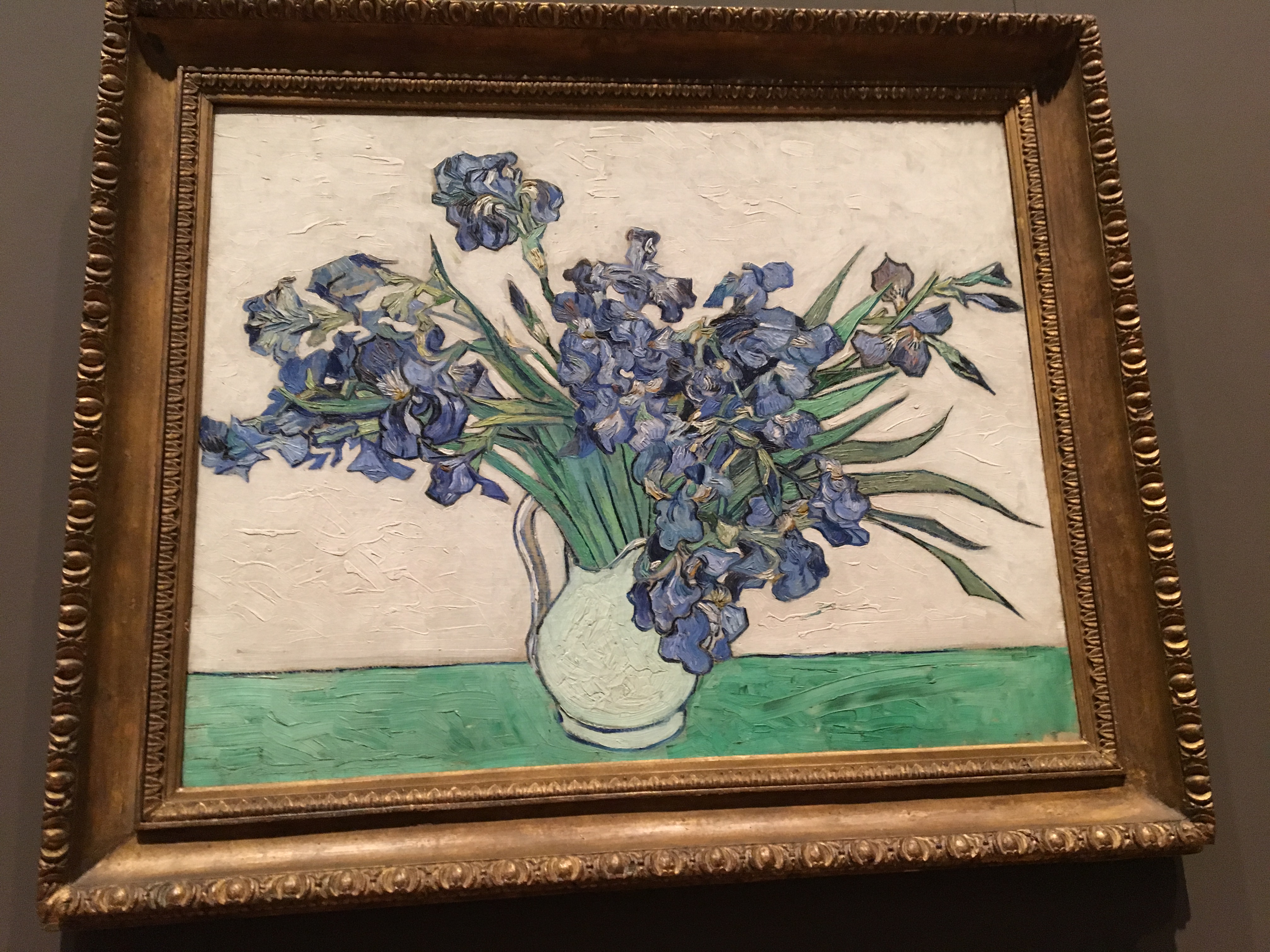
To see these pieces in real life were extraordinary. I had always known that Van Gogh had an affinity to have a lot of texture in his paintings but to see it really was insane. It was almost difficult not to want to trace my fingers over the brush strokes he had left, especially with Wheat Field and Sunflowers.
Looking at Van Gogh’s art truly was aw inspiring. It put me into something of a melancholy state of mind thinking about how a man who had been able to create so much beauty could take his own life. Though this may be odd to say, it is the same feeling I used to get when I first began listening to Nirvana. To just knowing the fact that the man whose voice I was gaining so much joy from couldn’t find that same joy in himself, and the same goes to Van Gogh. One thing that makes me feel really proud is knowing the fact that though he did not get much attention in his time, Van Gogh’s art was on display in gilded frames next to pieces like The Storm by Pierre-Auguste Cot and Water Lilies by Claude Monet.
Though the entire room wasn’t dedicated to a singular artist, which I find common in many art museums, I don’t believe it retracted the significance of the individual pieces. I feel as though this simplification and evening out of these artists on a basic level of viewing made me appreciate each piece more. It was as though no artist was seen higher than any of the rest. It allowed the viewers to be drawn to whatever piece called to them naturally, as the Van Goghs had done to me. On top of that, the lighting of the room wasn’t overly bright. It was clear enough so I could see the paintings well, but dim and warm enough to be calming. I found this part of the experience nice but did make it a little difficult to take proper photos. If I were to complain about one thing, I remember the paintings being at different heights. Some were more eye level with me, like ones on display in the center of the room, and some were higher and difficult for me to get the best look at. Though I know not everyone is as particular as I am, I would hope there would be a bit more consistency in the flow and layout.
If someone is ever considering to go visit the MET, I would highly recommend visiting this area, particularly for the Van Goghs. They really change your outlook on art history.







